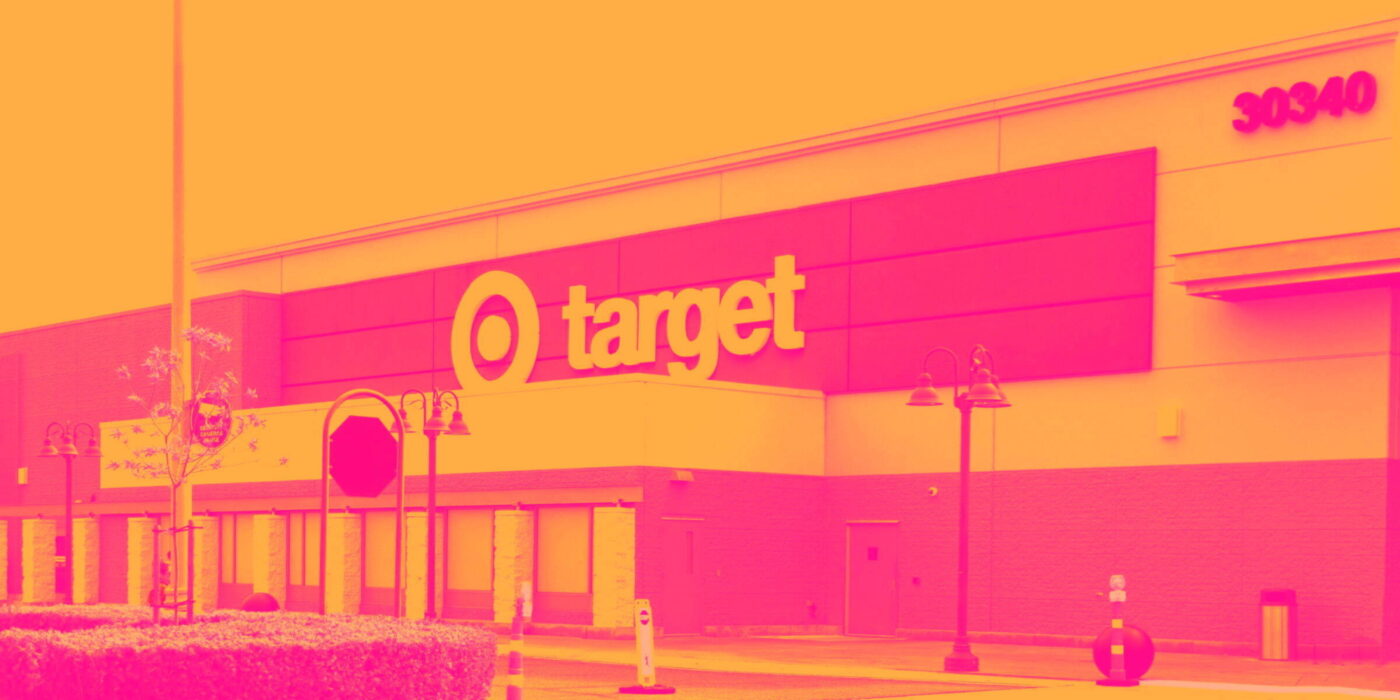|
|
|

|
|||||

|
|

General merchandise retailer Target (NYSE:TGT) met Wall Streets revenue expectations in Q3 CY2025, but sales fell by 1.6% year on year to $25.27 billion. Its non-GAAP profit of $1.78 per share was 3.6% above analysts’ consensus estimates.
Is now the time to buy TGT? Find out in our full research report (it’s free for active Edge members).
Target’s third quarter results aligned with Wall Street’s revenue expectations, but the company continues to face subdued sales trends. Management attributed the ongoing softness primarily to cautious consumer spending and weakness in discretionary categories such as home and apparel. CEO Brian Cornell acknowledged, “Our business has not been performing up to its potential over the last few years,” highlighting Target’s focus on refining merchandising and elevating in-store and digital experiences. Leadership pointed to progress in food and beverage and digital fulfillment, but recognized that broader improvements are still necessary.
Looking forward, Target’s updated guidance reflects persistent consumer caution and a volatile retail environment. Management has prioritized investments in store remodels, new locations, and technology upgrades to accelerate operational improvements. Michael Fiddelke, Chief Operating Officer, stated, “We’re not satisfied with our current results and are relentless in our pursuit of returning to growth.” The company plans to expand its use of artificial intelligence and enhance its merchandise assortment, while also increasing capital expenditures in 2026 to support these initiatives. However, leadership remains measured in their outlook, citing ongoing uncertainty and a need for further progress before achieving sustainable growth.
Management attributed third quarter performance to continued consumer restraint in discretionary spending, targeted investments in merchandising, and advances in digital fulfillment.
Discretionary weakness persists: Target continued to experience softness in categories like home and apparel, while seasonal moments such as back-to-school and Halloween provided some sales lift. Management noted that consumers prioritized essentials and value over discretionary purchases.
Food & beverage outperformance: The food and beverage segment saw growth, especially in beverages and health-focused products. Leadership highlighted that new product introductions and trend-forward assortments in this category were well-received by guests.
Digital fulfillment gains: Digital sales rose, with more than 35% growth in same-day delivery powered by Target Circle 360 membership and increased use of Drive-Up services. The company’s investments in digital fulfillment and marketplace offerings, like Target Plus, contributed to these results.
Inventory and in-stock improvements: Efforts to optimize inventory management, including machine learning-driven forecasting and supply chain technology, resulted in a 150 basis point improvement in in-stock rates for top-selling items, addressing a key operational challenge.
Organizational restructuring: The elimination of approximately 1,800 headquarters roles aimed to streamline decision-making and empower teams, with management emphasizing that this was not a cost-cutting move but a step to increase agility and support strategic priorities.
Target’s outlook is shaped by continued investment in merchandising, store upgrades, and technology, as well as persistent consumer caution.
Elevated capital spending: Management plans to raise capital expenditures by about 25% in the next year, focusing on new store openings, remodels, and technology enhancements. These investments are aimed at improving the guest experience and supporting growth in both in-store and digital channels.
Technology and AI integration: The company is accelerating adoption of artificial intelligence tools for trend forecasting, assortment planning, and personalized marketing. Expanded use of synthetic audiences and AI-driven creative platforms is expected to increase speed to market and relevance for consumers.
Consumer uncertainty and margin pressures: Leadership cited continued volatility in consumer sentiment, with guests remaining value-focused and cautious. Management also highlighted ongoing gross margin pressures from markdowns and the need to balance investments with profitability, particularly as they ramp up store and technology initiatives.
Looking ahead, StockStory’s team will monitor (1) the pace and impact of Target’s store remodels and new location openings, (2) measurable improvements in inventory management and in-stock rates driven by technology investments, and (3) the effectiveness of new product launches in discretionary categories such as FUN 101 and home. Progress on digital fulfillment and continued consumer engagement with Target Circle 360 will also be important markers for tracking the company’s recovery and growth potential.
Target currently trades at $86.53, down from $88.52 just before the earnings. Is there an opportunity in the stock?The answer lies in our full research report (it’s free for active Edge members).
The market’s up big this year - but there’s a catch. Just 4 stocks account for half the S&P 500’s entire gain. That kind of concentration makes investors nervous, and for good reason. While everyone piles into the same crowded names, smart investors are hunting quality where no one’s looking - and paying a fraction of the price. Check out the high-quality names we’ve flagged in our Top 9 Market-Beating Stocks. This is a curated list of our High Quality stocks that have generated a market-beating return of 244% over the last five years (as of June 30, 2025).
Stocks that have made our list include now familiar names such as Nvidia (+1,326% between June 2020 and June 2025) as well as under-the-radar businesses like the once-small-cap company Comfort Systems (+782% five-year return). Find your next big winner with StockStory today.
| 45 min | |
| 57 min | |
| 59 min | |
| 1 hour | |
| 1 hour | |
| 1 hour | |
| 2 hours | |
| 2 hours | |
| 2 hours | |
| 3 hours | |
| 4 hours | |
| 4 hours | |
| 8 hours | |
| Nov-19 | |
| Nov-19 |
Stocks to Watch Wednesday: Alphabet, Lowe's, Target, Constellation Energy
TGT
The Wall Street Journal
|
Join thousands of traders who make more informed decisions with our premium features. Real-time quotes, advanced visualizations, backtesting, and much more.
Learn more about FINVIZ*Elite